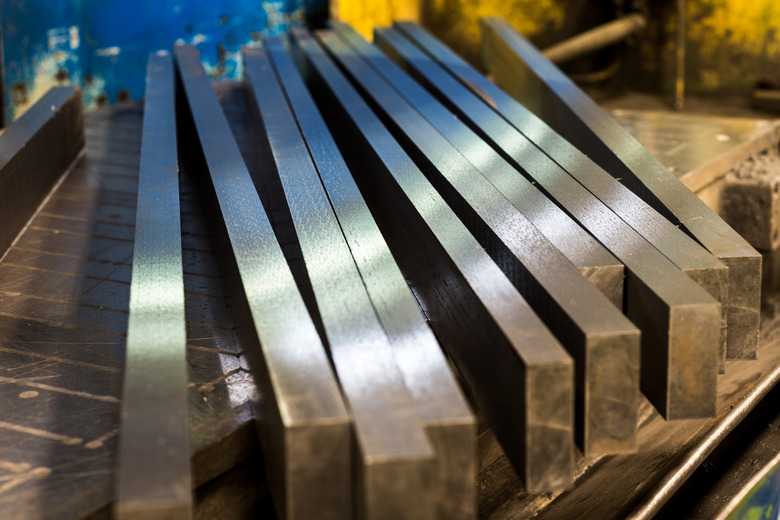What Are The Similarities Metals & Nonmetals Have In Common?
Metals play an important role in the lives of humans and the functioning of the Earth as a whole. On a simplistic level, metals conduct electricity and heat well, appear in fairly durable forms and have high melting points. While nonmetal elements lack these properties, they share some fundamental similarities with metals.
TL;DR (Too Long; Didn't Read)
Metals tend to be strong and conductive, and have high melting points. However, like nonmetals, their forms occur as a distinct combination of electrons, protons and neutrons. All elements, metal or otherwise, can change state or react.
Elemental Importance
Elemental Importance
Metals make up the bulk of Earth's crust, notably aluminum, iron, sodium and potassium. Some of these elements, such as potassium, also appear in human bodies. However, nonmetals also have a role to play in these regards. Scientists dubbed life on the planet as carbon-based, meaning organic structures exist with carbon at the core of other compounds in their bodies, as in sugar, and carbon also appears in the Earth's crust. Similarly, the gases hydrogen and oxygen form H20, or water, which makes up most of the Earth's surface and the bodies of many living things.
Similar on a Basic Level
Similar on a Basic Level
Metals usually appear in crystalline structures, while nonmetals take many different forms. Noble gases, as their name implies, appear as gasses at room temperature. All elements can form compounds, though some do so less readily than others. Similarly, every element can change state – liquid, solid and gas– given the right circumstances such as high or low temperature. All elements can also cause chemical reactions, which often involve a change of state or a release of energy, though some, like noble gasses, do so less readily.
All of these reactions and compounds occur because metals and nonmetals share fundamental building blocks. Proton, neutrons and electrons all exist in different numbers in a molecule, and the combination of these three factors determines which element is which.
Oddities on the Table
Oddities on the Table
Scientists classify roughly three-quarters of the elements on the periodic table as metals. Metals sit to the left side of the period table, while nonmetals sit on the right. Metalloids sit in between the two classifications and share some properties with metals, although they lack the classification of a proper metal. While at room temperature, metalloids have poor conductivity. However, when heated, they become relatively good conductors. Adding metals to their structure helps in this regard. Boron, silicon and germanium sit in this designation, and they find use in various products, such as ceramics and semiconductors, unlike metals, which are used in the creation of conductors.
Cite This Article
MLA
Johnson, Doug. "What Are The Similarities Metals & Nonmetals Have In Common?" sciencing.com, https://www.sciencing.com/similarities-metals-nonmetals-common-8279712/. 22 May 2018.
APA
Johnson, Doug. (2018, May 22). What Are The Similarities Metals & Nonmetals Have In Common?. sciencing.com. Retrieved from https://www.sciencing.com/similarities-metals-nonmetals-common-8279712/
Chicago
Johnson, Doug. What Are The Similarities Metals & Nonmetals Have In Common? last modified March 24, 2022. https://www.sciencing.com/similarities-metals-nonmetals-common-8279712/
